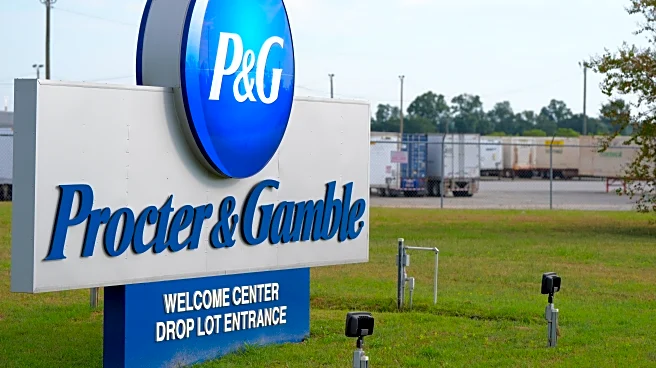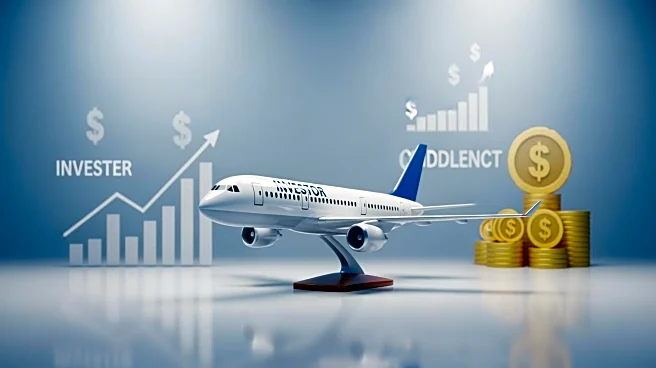What's Happening?
Procter & Gamble (P&G) has reported better-than-expected earnings for the first fiscal quarter, driven by strong demand in its beauty and hair-care segments. The company posted sales of $22.39 billion and a core earnings per share (EPS) of $1.99, surpassing
Wall Street expectations of $1.90 EPS and $22.18 billion in revenue. Despite facing higher costs due to tariffs, P&G managed to offset these expenses through strategic price increases. The company noted that while overall volume remained flat, the beauty segment saw a 4% increase. P&G has also adjusted its annual tariff-cost outlook to approximately $400 million after tax, following tariff relief from Canada. Shares of P&G rose about 3% in premarket trading as the company reaffirmed its full-year guidance in a challenging geopolitical environment.
Why It's Important?
The earnings report from P&G highlights the resilience of consumer goods companies in navigating economic challenges such as tariffs and inflation. By successfully managing costs and maintaining demand, P&G demonstrates effective strategic planning that could serve as a model for other companies facing similar pressures. The company's ability to maintain its guidance despite geopolitical headwinds underscores its strong market position and adaptability. This development is significant for investors and stakeholders in the consumer goods sector, as it provides insights into how companies can thrive amid economic uncertainties. Additionally, P&G's performance may influence market sentiment and investor confidence in the broader consumer goods industry.
What's Next?
P&G's reaffirmation of its full-year guidance suggests that the company is confident in its ability to navigate ongoing challenges. Investors will likely monitor P&G's strategies for managing tariff costs and maintaining demand across its product segments. The company's approach to pricing and cost management will be crucial in sustaining its performance. Furthermore, P&G's outlook may impact its stock performance and investor decisions in the coming quarters. As geopolitical tensions and economic conditions evolve, P&G's strategies could influence broader industry trends and consumer behavior.
Beyond the Headlines
P&G's earnings report sheds light on the broader economic landscape, particularly the impact of tariffs and inflation on consumer behavior. The company's description of a K-shaped economy, where different income groups exhibit varying shopping habits, highlights the complexities of consumer demand in today's market. This insight could have implications for policymakers and businesses as they seek to understand and address the diverse needs of consumers. Additionally, P&G's ability to adapt to changing conditions may inspire other companies to innovate and refine their strategies in response to economic challenges.















